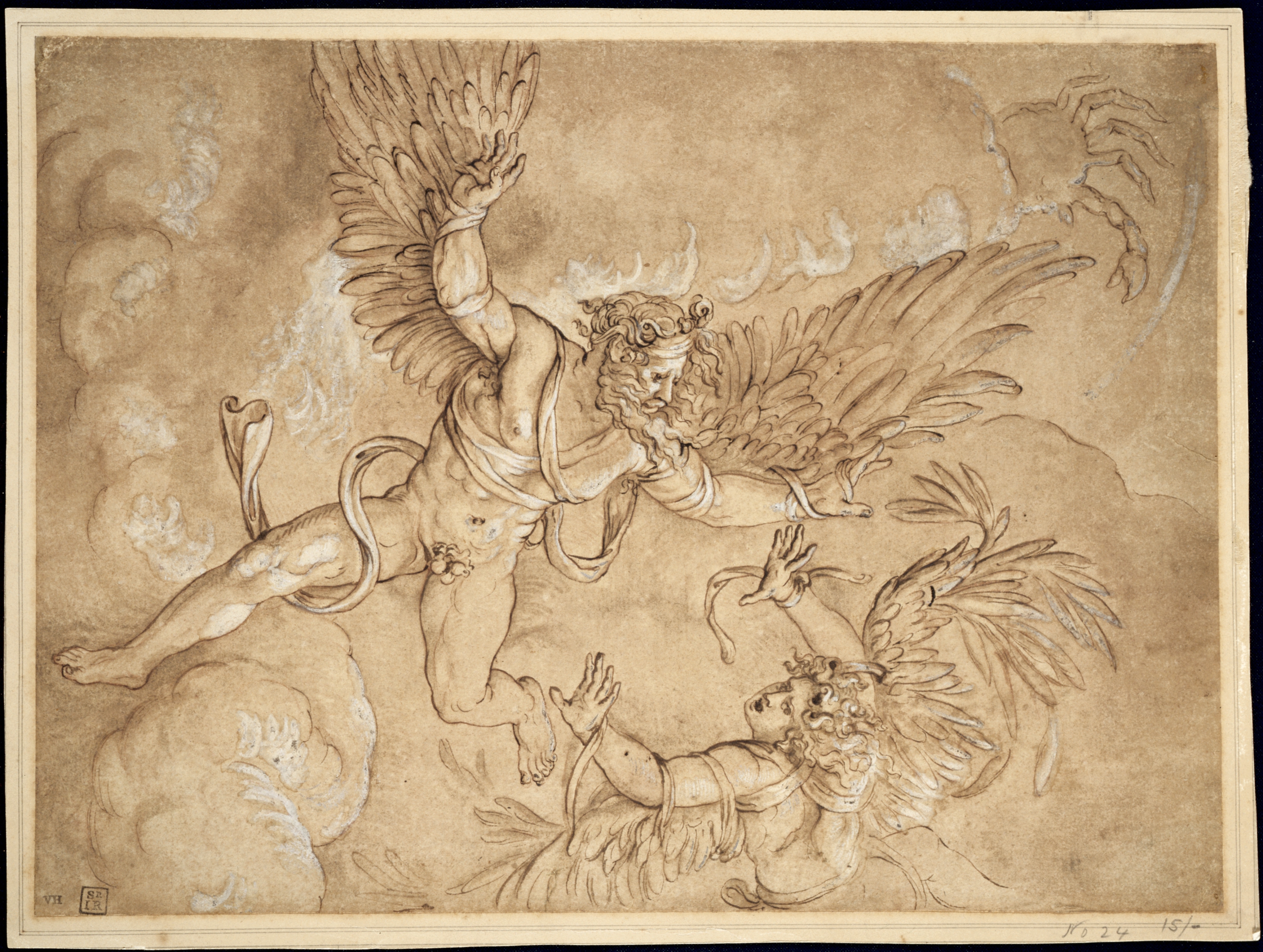The Cleveland Museum of Art
Collection Online as of April 18, 2024

Copy after Giulio Romano's Fall of Icarus
after 1536
after Giulio Romano
(Italian, 1492/99–1546)
Sheet: 39.8 x 29.3 cm (15 11/16 x 11 9/16 in.); Secondary Support: 41.9 x 31.6 cm (16 1/2 x 12 7/16 in.)
Location: not on view
Description
Having flown too close to the sun, Icarus plummets from the sky as the wax securing his makeshift wings melts, and the straps unravel. His father Daedelus, who invented the wings, watches in horror as his son begins a deadly fall. Punished for failing to heed his father’s warning and attempting to enter the realm of the gods, Icarus was a moral reminder to Renaissance viewers of human fallibility and the risks of excessive pride.- Joseph van Haecken (Lugt 2516, stamped, lower right, in black ink)Sir Joshua Reynolds (Lugt 2364, stamped, lower right, in black ink)
- Turner, Evan H. "The Year in Review for 1992." The Bulletin of the Cleveland Museum of Art 80, no. 2 (1993): 38-79. p. 73, no. 272 25161388
- Gods and Heroes: Ancient Legends in Renaissance Art. The Cleveland Museum of Art, Cleveland, OH (organizer) (August 26-December 31, 2017).Signs of Affection: Gifts Honoring the Museum's 75th Anniversary. The Cleveland Museum of Art, Cleveland, OH (organizer) (October 27, 1992-January 3, 1993).
- {{cite web|title=Copy after Giulio Romano's Fall of Icarus|url=false|author=Giulio Romano|year=after 1536|access-date=18 April 2024|publisher=Cleveland Museum of Art}}
Source URL:
https://www.clevelandart.org/art/1992.90